2023 APCCMPD Annual Conference

APCCMPD AWARDS PROGRAM
Abstract Awards
APCCMPD Award for Medical Education Research
APCCMPD Award for Novel Fellowship Education Implementation
APCCMPD Award for Innovative Fellowship Program Administration
Achievement Awards
Outstanding Educator Award
Mid-Career Educator Award
Emerging Educator Award
Funding Awards
APCCMPD, CHEST and ATS Education Research Award
CHEST Foundation and APCCMPD Award Research Grant for Medical Education
Abstract Awards
APCCMPD AWARD FOR MEDICAL EDUCATION RESEARCH
|
|
The APCCMPD Award for Medical Education Research recognizes pulmonary, critical care, and pulmonary/critical care medicine Training Program Directors, Associate Program Directors, Key Clinical Faculty, and Fellows-in-Training for their outstanding contributions and commitment to medical education research. The recipient is selected for conducting innovative research focused on undergraduate or graduate medical education in pulmonary, critical care, and pulmonary/critical care medicine.
|
The APCCMPD honors the contributions of all 2023 applicants:

Melissa R. Jordan, MD
University of Alabama Heersink School of Medicine
A Track for Trachs: Implementation of a Formal Curriculum, Checklist and Feedback Protocol in Trainees Performing Percutaneous Tracheostomy at a Tertiary Academic Center
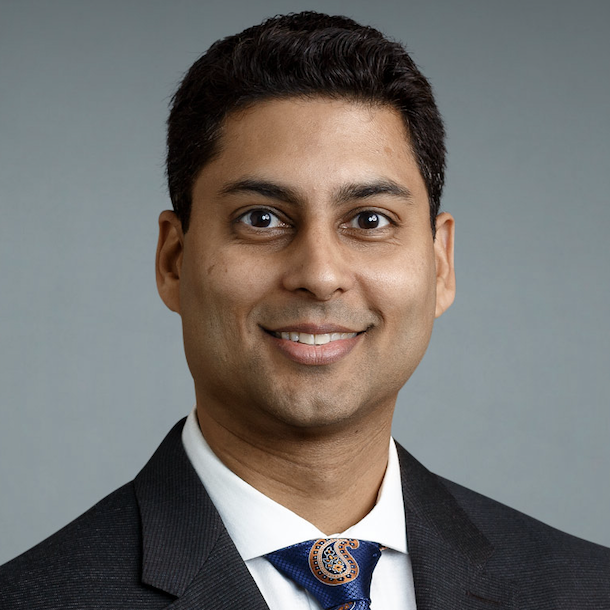
Deepak Pradhan, MD, MHPE candidate
New York University Grossman School of Medicine
Fellows Teaching Faculty: A Qualitative Study Exploring Reverse Educational Distance Near-Peer Education
|
| |
| A Track for Trachs: Implementation of a Formal Curriculum, Checklist and Feedback Protocol in Trainees Performing Percutaneous Tracheostomy at a Tertiary Academic Center |
|
Melissa R. Jordan, MD
Edwin C. Gunn, MD
Jonathan P. Kalehoff, MD
Ross C. Schumacher, MD
Daniel W. Scullin, MD
John P. Simmons, MD
University of Alabama Heersink School of Medicine
|
  
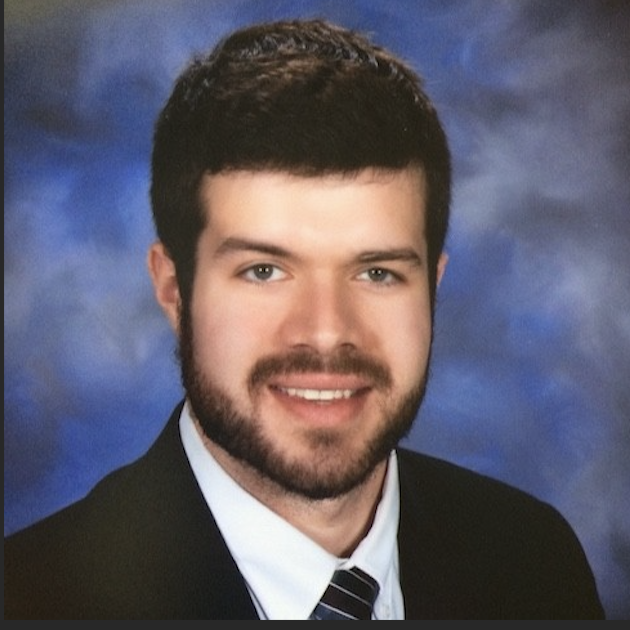  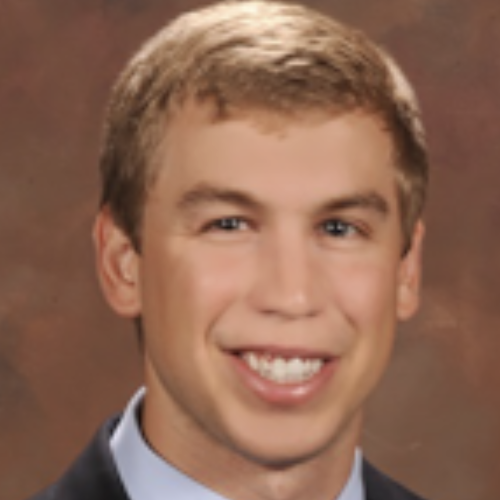
|
|
BACKGROUND
The Division of Pulmonary & Critical Care at the University of Alabama at Birmingham (UAB) recently instituted a percutaneous dilatational tracheostomy (PCT) team to accommodate the increasing demand for long term ventilation in our patient population. Fellows without a surgical background have been performing tracheostomies more frequently at our institution without a formalized educational pathway. Therefore, we designed and implemented an innovative formal tracheostomy curriculum and evaluation process to improve fellow educational experience, procedural competency and procedure feedback. To our knowledge, this is the first PCT educational curriculum developed that provides educational materials regarding PCT placement and tracheostomy care, as well as standardization of procedural steps and trainee evaluation.
METHODS
We designed a tracheostomy curriculum based on literature review along with a standardized process for the evaluation of fellows shortly after PCT placement to improve fellow education, and improve procedural competency and feedback. The curriculum includes providing trainees with a comprehensive tracheostomy educational primer, procedure checklist, and a sixty-minute didactic lecture outlining fundamental aspects of PCT placement. Competency is assessed in a variety of ways, including the comparison of baseline knowledge on a pre- and post-didactic assessment as well as a formalized feedback session with the supervising faculty (Table 1), using our competency evaluation form (Figure 1). Six months after implementation of the PCT curriculum, we plan to assess the percent utilization of the competency evaluation form, assess procedure competency based on a 10-point Likert scale completed by the supervising faculty, and assess knowledge acquisition with the pre- and post-didactic knowledge assessment.
RESULTS
Six PGY-4 PCCM fellows, five PGY-5 PCCM fellows, and 2 PGY-4 CCM fellows have completed the baseline knowledge pre-didactic assessment and have received the sixty-minute didactic lecture. The average score on the assessment was 66%, 70%, and 68% for the PGY-4 fellows, PGY-5 fellows, and all fellows respectively. One PGY-5 fellow did not receive the knowledge pre-didactic assessment or the didactic lecture due to a scheduling conflict. The six current PGY-6 fellows created the curriculum and therefore will only be included in the procedural competency evaluation. We anticipate that all fellows will have received procedural competency evaluations by spring 2023 to complete analysis of this data.
CONCLUSION
PCT is a procedure that is becoming more frequently performed by pulmonary and critical care physicians. It is imperative to structure PCT education and to standardize the PCT procedure to improve patient outcomes as well as PCCM fellow training and competency. Upon completion of the study, we will compare pre-post knowledge assessment, assess use of procedure checklist, and evaluate procedural competency. The curriculum developed aims to promote fellow education and improve patient quality. We believe this curriculum will be sustainable at our institution and has the potential to be implemented in training programs across the world.
|
| |
| Point-of-Care Ultrasound Competency of NYU Pulmonary/Critical Care Medicine Fellows Over the Last Six Years |
|
Deepak Pradhan, MD, MHPE candidate
Jacqueline Paulis, MD, MHPE candidate
David T. Stern, MD, PhD
New York University Grossman School of Medicine
Elise L. Huppert, MD, MSCI
Columbia University Irving Medical Center
Amanda Jurewicz, MD, MBA
Hospital of the University of Pennsylvania
|
  
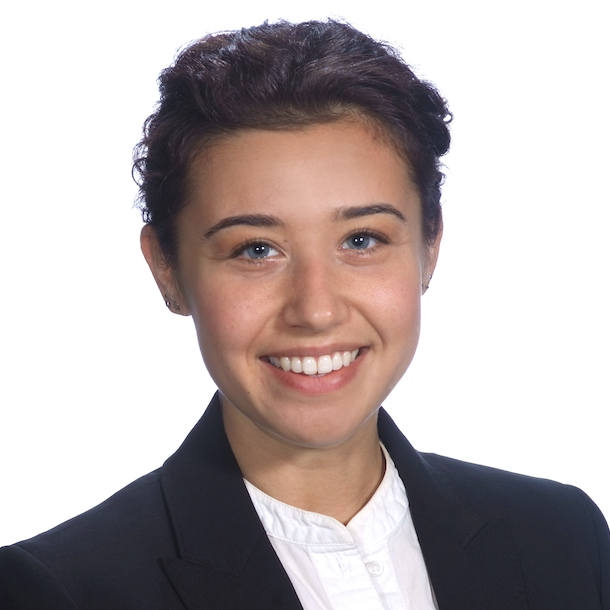 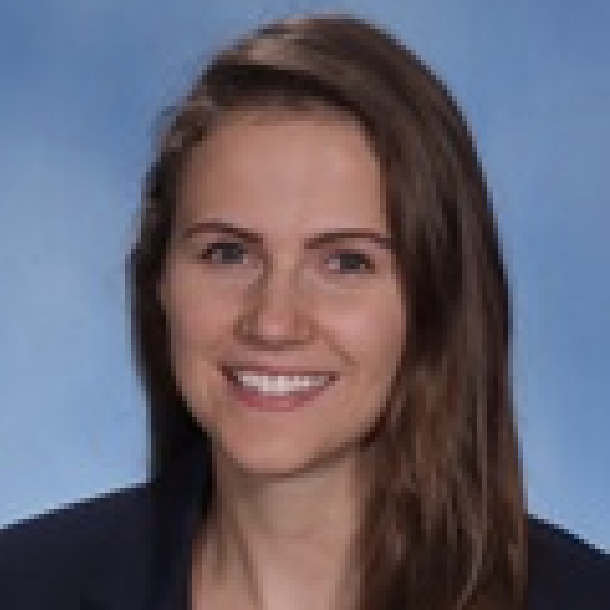
|
|
BACKGROUND
Near-peer education (NPE) involving a senior teacher and a junior learner is facilitated by cognitive congruence (teacher remembers micro-steps of becoming recently competent) and social congruence (learner encounters less anxiety learning from a near-peer)(1). However, the educational distance separating teacher and learner affects the success of this educational method(2). Moreover, the impact of reverse education distance (RED), wherein the teacher is junior in status to the learner, on NPE has not been well-characterized. Specific literature gaps include: perceived effectiveness of RED-NPE for skill acquisition; characterization of cognitive and social congruence in RED-NPE; teacher/learner experiences undergoing RED-NPE. We aimed to explore these gaps in the context of fellows engaged in RED-NPE with attending faculty. Trainees, especially those engaged in subspecialty training, frequently teach those senior to them, formally during didactic conferences and training sessions, informally during patient care teaching rounds, and particularly with emerging technologies such as social media and computer-based technologies, or changing best practices. Thus, the results of this study may expand our educational understanding of RED-NPE, and inform practical guidance for optimizing teacher-learner interactions in RED-NPE.
METHODS
Constructivist grounded theory qualitative semi-structured interview study. Third-year Pulmonary/Critical Care Medicine (PCCM) fellows taught a novel formal 7-month-long longitudinal CME-accredited point-of-care ultrasound (POCUS) course from 11/2022-06/2023 for attending pulmonologist learners at our institution. Both groups were purposively sampled through semi-structured interviews (SSI) exploring their RED-NPE experiences. Teacher/learner SSI guides were crafted, underwent internal/external pilot testing, and iterative revisions. One-on-one SSIs were conducted by two trained senior medical student researchers, audio-recorded, verbatim transcribed, first-cycle in-vivo coded and second-cycle pattern coded by two Master of Health Professions Education (MHPE) candidates with code adjudication by a qualitative research mentor, and then inductive thematic analysis, refinement of themes, and creation of a conceptual model to link interpretations to emerging theory(3). Study trustworthiness included reflexivity via field notes during SSIs and journal-writing during coding and analysis, triangulation by interviewing both teachers and learners, and member-checking results. Atlas.ti v22 used for data analysis.
RESULTS
All longitudinal course participants consented to SSIs—8 PCCM fellows (50% male) and 10 attending Pulmonologists (30% male)—resulting in 608 minutes of transcribed data. Twelve themes emerged surrounding: power dynamics, anxiety, enjoyment, motivation, uncertainty, teacher preparation, baseline skillsets between teacher and learner, feedback, learner and teacher differences, teacher-learner relationship, professional development, and learning environment. Perceived effectiveness of RED-NPE for skill acquisition was confirmed. Persistence of cognitive congruence between teachers and learners engaged in RED-NPE was corroborated and suggested a stronger connection emanating from shared specialty and clinical experiences. Direct professional benefits to fellows were seen in growth as teachers and through feedback. Findings regarding social congruence included: hierarchical power dynamics fostering fellow teacher uncertainty, anxiety as an external motivator, as well as compromised quality of corrective feedback delivered to attending learners; fellow-attending familiarity mitigating this uncertainty and anxiety; and parental-like attending pride emanating from appreciating fellows’ professional growth. Conceptualization of these themes led to an emerging RED-NPE conceptual model (Figure 1). Interviewee suggestions to improve teacher-learner dynamics in RED-NPE included: importance of teacher competence and role comfort, serially teaching to build teaching experience through repetition, and beneficial effect of faculty supervision during sessions to support both teachers and learners.
CONCLUSION
In the context of reverse educational distance with fellows teaching faculty, we found evidence of perceived effectiveness in skill acquisition, heightened cognitive congruence due to shared clinical experiences, and decreased social congruence due to hierarchical power dynamics, mitigated by familiarity. Next steps include further investigation into social congruence in RED-NPE, exploring RED-NPE with different participants/contexts/settings, and testing mitigation strategies to alleviate teacher anxiety and expand understanding of this phenomenon and further optimize teacher-learner interactions.
REFERENCES
- Lockspeiser, T. M., O'Sullivan, P., Teherani, A., & Muller, J. (2008). Understanding the experience of being taught by peers: the value of social and cognitive congruence. Adv Health Sci Educ Theory Pract, 13(3), 361-372.
- Hall, S., Stephens, J., Andrade, T., Davids, J., Powell, M., & Border, S. (2014). Perceptions of junior doctors and undergraduate medical students as anatomy teachers: Investigating distance along the near-peer teaching spectrum. Anat Sci Educ, 7(3), 242-247.
- Kiger, M. E., & Varpio, L. (2020). Thematic analysis of qualitative data: AMEE Guide No. 131. Medical teacher, 42(8), 846–854.
|
APCCMPD AWARD FOR NOVEL MEDICAL EDUCATION IMPLEMENTATION
|
|
The APCCMPD Award for Novel Medical Education Implementation recognizes pulmonary, critical care, and pulmonary/critical care medicine Training Program Directors, Associate Program Directors, Faculty, and Fellows-in-Training for their outstanding contributions and commitment to fellowship medical education and training. The recipient is selected for development of novel and innovative curricular development in his/her training program.
|
Congratulations to the 2023 awardees:
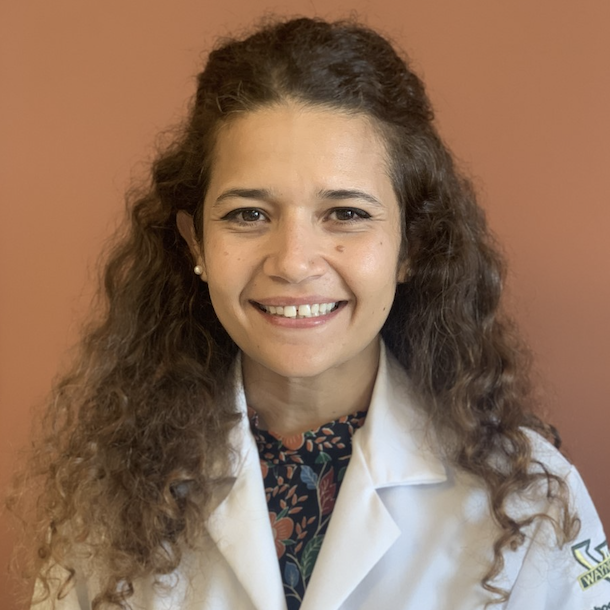
Asil Daoud, MD
Wayne State University School of Medicine
Innovative E-Learning Based Curriculum in Non-Invasive Ventilation for Pulmonary and Critical Care Fellows

Christopher Ghiathi, MD
University of Pennsylvania
A Near-Peer Coaching Program For First-Year Fellows in the Intensive Care Unit
The APCCMPD honors the contributions of all 2023 applicants:
Sheetal Gandotra, MD
University of Alabama at Birmingham
Teaching Tele-Medicine: Implementation of a Fellow Tele-ICU and eICU Rotation
Meenu Johnkutty, BS
Stony Brook University Renaissance School of Medicine
A Novel Simulation Paradigm for Critical Care Training: In Situ Mirror Simulation
Amira Mohamed, MD
Montefiore Medical Center
Addressing Microaggression During Training
Deepak Pradhan, MD, MHPE candidate
New York University Grossman School of Medicine
POCUS for Pulmonologists: Novel Fellow-Taught Longitudinal Point-of-Care Ultrasound Course Created Through Four-Component Instructional Design
Zachary A. Reese, MD
Hospital of the University of Pennsylvania
Better Together: Pulmonary Fellow Group Evaluations of Faculty Are Stronger Than Individual Evaluations Alone
Drew D. Robinson, MD
University of Alabama at Birmingham
Implementing a Structured Multidisciplinary Critical Care Curriculum for Critical Care Fellows
Timothy J. Rowe, MD
Northwestern University Feinberg School of Medicine
Impact of Simulation-based Mastery Learning on Massive Hemoptysis Management for Pulmonary Fellows and Advanced Practice Providers
|
| |
2023 AWARDEE
Innovative E-Learning Based Curriculum in Non-Invasive Ventilation for Pulmonary and Critical Care Fellows |
|
Asil Daoud, MD
Abdulghani Sankari, MD, PhD
Divya Venkat, MD
Wayne State University School of Medicine
|
  
|
|
INTRODUCTION
The ongoing evidence on the importance of non-invasive ventilation (NIV) use in acute and chronic respiratory failure has highlighted the genuine need to develop a structured, standardized NIV education and training to develop advanced operator skills.(1) However, of what we know, there is no standardized NIV curriculum for rapid mastery. Our objective is to create a standardized NIV curriculum using E-learning modules and evidence-based bedside practices for PCCM fellows.(2,3)
ABSTRACT PRESENTATION
The curriculum targeted new PCCM fellows (N=8) to assess competency and knowledge in the key topics of NIV management which was divided into two parts. The first part focused on NIV use in acute respiratory failure and the second part focused on NIV use in chronic respiratory failure. The NIV e-curriculum consisted of the following sequential steps: 1) A baseline written knowledge test consisting of twenty-five multiple choice questions (MCQs), including NIV topics and the latest evidence-based practices in both settings of acute and chronic respiratory failure in the ICU and the pulmonary clinic. Discrimination and difficulty indices were used to narrow to the final 25 MCQs from a pool of 45 questions tested on four PCCM attendings and five PCCM fellows. 2) A pre-training confidence survey using a five-point Likert scale for subjective evaluation. 3) Four E-learning evidence-based modules were developed using animated characters for patients and providers, created using two different online platforms. The first module, 17:30 minutes long, included an introduction to NIV with detailed explanation of the pathophysiology behind using NIV in respiratory failure. It also included recommendations on initial settings, clinical parameters monitoring, titration, contraindications, and liberation, based on most recent guidelines published in ERS and ATS. This first E-learning module had an embedded video with one of the PCCM fellows at WSU (Wayne State University) explaining equipment and knobology. The second and third modules, 22:15 minutes long, were interactive E-learning modules with two clinical scenarios. The modules start with history and physical examination of two patients; one presenting to the hospital for acute hypercapnic respiratory failure requiring NIV in ICU and the second coming to the pulmonary clinic for follow up on long term home NIV. These modules have embedded quizzes on next steps in management and evidence-based explanation of incorrect answers. They focused on making decisions to start NIV, initial settings, titration of settings, liberation for NIV in ICU and outpatient follow up. The fourth module, six minutes long, included a detailed explanation of the clinical approach to different types of desynchrony. 4) One-hour didactics were conducted, focusing on indications of NIV other than the two clinical scenarios discussed in the e-modules. 5) 30-minute knobology session and bedside clinical application of NIV settings. 6) A written knowledge posttest done four weeks from baseline testing. 7) A posttraining confidence survey using a five-point Likert scale for subjective evaluation.
DISCUSSION
In July 2022, eight first year PCCM fellows completed the training of a total duration of 166-minutes (about three hours). The average MCQ score increased from 13.5 ± 3.2 to 18.37 ± 1.6 (maximum of 25), which equated to about 36% improvement (P<0.05) (Figure 1). The confidence survey also revealed improved learner confidence in all competencies with statistical significance (P<0.05) (Table 1).
CONCLUSION
E-learning is one of the new methods of education which is easily accessible and reproducible over the years. This internet-based curriculum that focused on the NIV use for PCCM trainees and included videos of clinical case scenarios with animated characters, didactics, and bedside small group and knobology sessions, showed improvement in the knowledge and confidence in NIV use for the PCCM fellows.
REFERENCES
- Ruiz JG, Mintzer MJ, Leipzig RM. The impact of E-learning in medical education. Acad Med. 2006 Mar;81(3):207-12. doi: 10.1097/00001888-200603000-00002. PMID: 16501260.
- Elliott MW. Non-invasive ventilation: Essential requirements and clinical skills for successful practice. Respirology. 2019 Dec;24(12):1156-1164. doi: 10.1111/resp.13445. Epub 2018 Nov 23. PMID: 30468277.
- Karim HMR et al, Noninvasive ventilation: education and training. A narrative analysis and an international consensus document. Adv Respir Med. 2019;87(1):36-45. doi: 10.5603/ARM.a2019.0006. Epub 2019 Mar 4. PMID: 30830962.
|
| |
2023 AWARDEE
A Near-Peer Coaching Program for First-Year Fellows in the Intensive Care Unit |
|
Christopher Ghiathi, MD
Cameron Baston, MD, MSCE
University of Pennsylvania
Elizabeth A. Schackmann, MD, MS
Courtney L. Tuegel, MD
University of Washington
|
 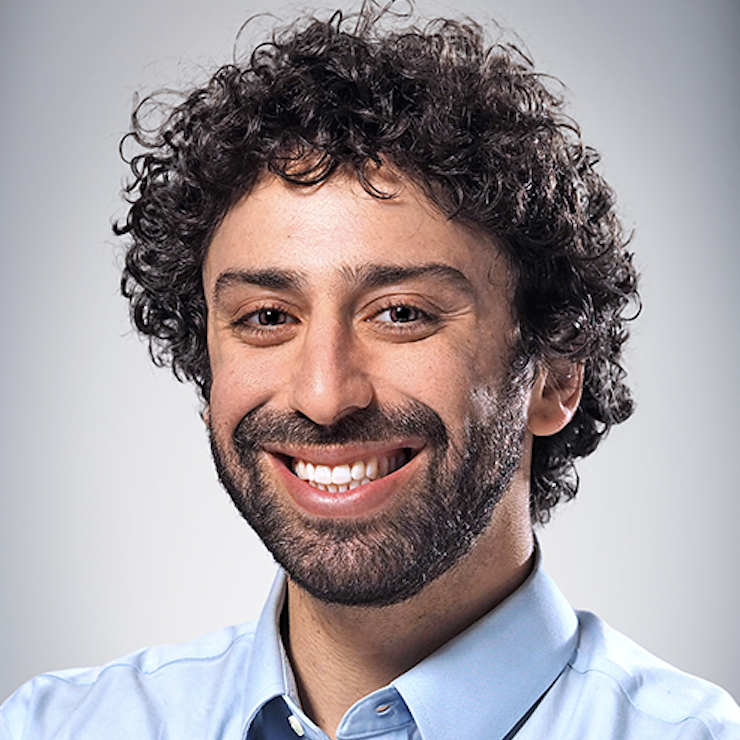
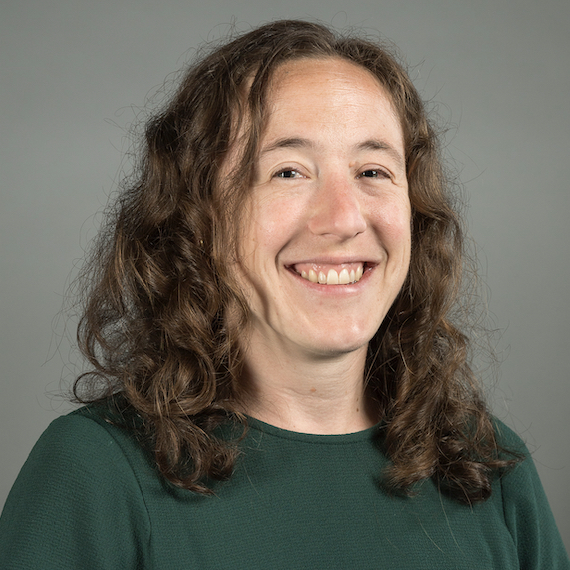 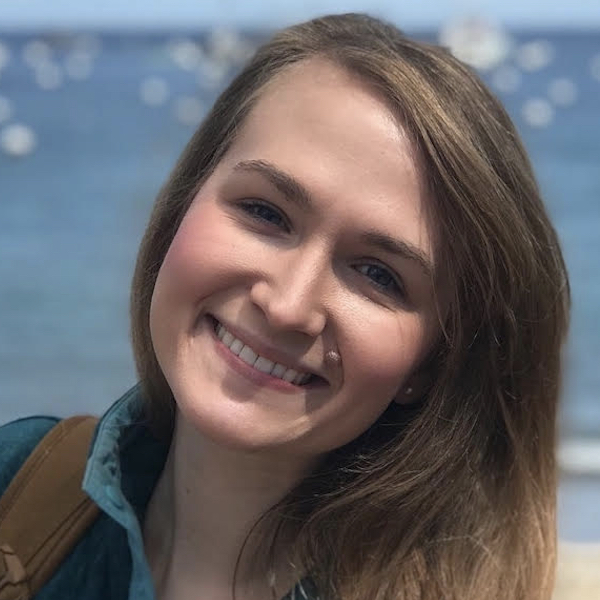
|
|
INTRODUCTION
During fellowship, Pulmonary and Critical Care Medicine (PCCM) fellows are expected to acquire the clinical knowledge to manage complex, critically ill patients, as well as develop into educators and leaders of a multidisciplinary team. Skill development, for both clinical and non-clinical domains, requires deliberate practice, guided by supervision and quality feedback. However, attending physicians may not have the opportunity or training to provide feedback on non-clinical aspects of team leadership, particularly while also engaged in clinical care. Near-peer coaching represents a potential intervention that allows for intentional skill growth for fellows across non-clinical domains. While similar programs have been implemented in medical school and residency settings, near-peer coaching has not yet been operationalized in PCCM fellowship.(1,2) Our aim was to implement a non-evaluative near-peer coaching program for first-year PCCM fellows in the intensive care unit (ICU), with the goal of helping them grow into expert educators and team leaders.
ABSTRACT PRESENTATION
The curriculum targeted first-year PCCM fellows during ICU rotations, starting in August 2021. First-year fellows were directly observed for approximately two hours during ICU rounds on two dates during the academic year. Observations were conducted by volunteer upper-year PCCM fellows, who completed a prerequisite educational session (outlining the program and best practices for delivering feedback) prior to participation. To guide the direct observations, we created a standardized observation form using a previously published near-peer coaching evaluation tool (Table 1).(2) This tool was modified for applicability to the ICU setting, and assesses learners on specific, observable skills that are grouped into four domains: Teaching, Management, Efficiency, and Communication. First-year fellows selected a primary domain to focus on prior to direct observation. Following observation, the first-year fellow and the coach would discuss feedback on the specified domain, in addition to one secondary domain identified by the upper-year coach. At the conclusion of the feedback session, the first-year fellows and coaches were surveyed regarding the coaching experience and its perceived impact on their skill development.
DISCUSSION
Since the start of the program in 08/2021, Sixteen first-year fellows have participated in the program, with eight upper-year fellows participating as near-peer coaches. Completed direct observation tools were analyzed for the primary domain selected by the first-year fellows. Survey responses were analyzed for consistent themes. Amongst first-year fellows, teaching skills were the most selected domain (n=7, 44%). Efficiency skills were the most selected secondary domain (38%) by coaches. When asked about the most useful pieces of feedback they received from their coach, fellows consistently expressed the importance of receiving positive feedback and the confidence that provided to their team leadership style. After receiving coaching, fellows felt better prepared to function as team leader on rounds, and to better balance efficiency and education. Fellows specifically expressed that coaching made their feedback to residents more specific and actionable, allowed more effective communication of roles and responsibilities, and encouraged modeling honesty about one’s limitations. Coaches said they appreciated the opportunity to reflect on and modify their own clinical and educational practice styles, improve community and familiarity with fellows in different years, and practice direct observation. Coaches identified several areas of iterative change for future feedback, including more granularity about team dynamics, centering feedback around demonstrable skills, and emphasizing areas of excellence.
CONCLUSION
Near-peer feedback offers a bidirectional growth opportunity for both first-year fellows and their senior coaches. It provides a space for self-reflection and feedback that is non-evaluative. It also provides coaches the opportunity to practice observation and feedback skills. Based on participant feedback, the program will be enhanced by tracking progress across domains over time with repeat coach-fellow pairs.
REFERENCES
- Sader J, Cerutti B, Meynard L, Geoffroy F, Meister V, Paignon A, Junod Perron N. The pedagogical value of near-peer feedback in online OSCEs. BMC Med Educ. 2022 Jul 25;22(1):572.
- Tuegel C, Schackmann E, Berger G, Albert T. Near-peer coaching tool for new senior residents. Med Educ. 2020 May;54(5):459-460.
|
| |
| Teaching Tele-Medicine: Implementation of a Fellow Tele-ICU and eICU Rotation |
|
Sheetal Gandotra, MD
University of Alabama at Birmingham
|
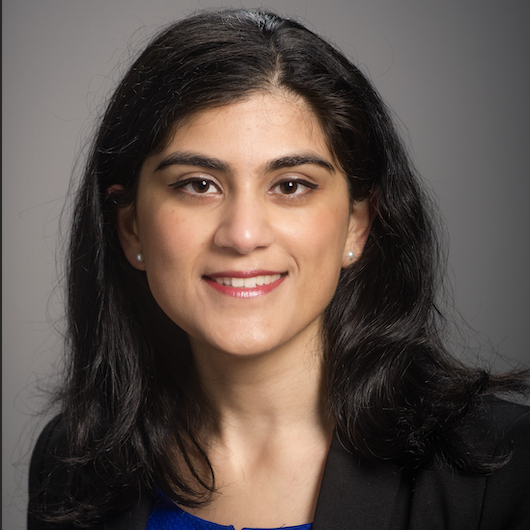
|
|
INTRODUCTION
During the COVID-19 pandemic, hospital systems rapidly increased the use of tele-critical care. However, due to the rapid innovation and implementation, limited formal graduate medical education was provided in how to effectively perform tele-medicine. University of Alabama at Birmingham (UAB) has a robust virtual critical care program comprised of two distinct models of care: tele-critical care (tele-ICU) through which consultative critical care is provided to patients located at rural community hospital partners and electronic intensive care unit (eICU), which provides 24-hour monitoring and care for patients in the UAB ICUs and step-down units. Many of our clinical faculty provide virtual care for critically ill patients, however, none have received formal training in telemedicine. Now that our faculty are well-versed in the tele-medicine program, we felt it was vital to develop and implement a tele-critical care/eICU rotation experience for our pulmonary critical care (PCCM) and critical care (CCM) fellows as many will likely engage in virtual critical care during their careers.
ABSTRACT PRESENTATION
We designed and implemented a two-week Tele-ICU/eICU rotation for the senior PCCM fellows and all CCM fellows. The UAB tele-ICU/eICU rotation provides an excellent opportunity for fellows to gain an understanding of remote critical care management in under-resourced settings, while learning tangible skills for managing critically ill patients in the virtual setting with the supervision of a faculty member. Table 1 outlines the fellow schedule during this rotation. During eICU shifts, the fellow works with a team of nurses and a faculty member, assessing new admissions and managing acute issues for the critically ill patients located in the UAB system, assisting the in-house teams as needed. The fellow also participates in transfer request phone calls from outside hospitals. During Tele-ICU, the fellow provides consultative critical care services to patients admitted to the ICU at Bryan Whitfield Hospital, a community hospital with a ten bed ICU and no local critical care physicians. Fellows review the medical record, evaluating new and follow up patients in the ICU daily using a rolling camera cart with the bedside nurse. The faculty member is included as part of this video call as well. Fellows address all critical care issues, communicating with the bedside RN, primary team (hospitalist and/or nurse practitioners), as well as family as needed. Documentation occurs in the hospital’s electronic medical record. We also created a guided discussion curriculum to pair with the clinical experience on this rotation. Fellows and faculty are provided with two articles and discussion questions in four topic areas relevant to virtual critical care: 1) Models of Tele-Critical Care, 2) Health Care Disparities, 3) Cognitive biases and heuristics, and 4) Emergency Medical Treatment and Labor Act (EMTALA) and Transfers. Given that this is a new rotation, the fellow and faculty receive an introductory email, including rotation documents reviewing the curriculum and the Milestones Based Goals and Objectives. Fellows are completing pre and post surveys to further evaluate the Tele-ICU/eICU curriculum.
DISCUSSION
Fellowship education has not previously included formal curriculum to teach skills necessary for providing virtual critical care. Capitalizing on our growing telemedicine program, we designed and implemented a tele-ICU/eICU rotation paired with a faculty-fellow guided discussion curriculum on important relevant topics. Given the rapid increase in the use of tele-critical care internationally, PCCM and CCM training programs have an opportunity to develop curriculum to ensure that fellows are graduating with skills to provide remote critical care services.
CONCLUSION
Fellowship education has not previously included formal curriculum to teach skills necessary for providing virtual critical care. Capitalizing on our growing telemedicine program, we designed and implemented a tele-ICU/eICU rotation paired with a faculty-fellow guided discussion curriculum on important relevant topics. Given the rapid increase in the use of tele-critical care internationally, PCCM and CCM training programs have an opportunity to develop curriculum to ensure that fellows are graduating with skills to provide remote critical care services.
|
| |
| A Novel Simulation Paradigm for Critical Care Training: In Situ Mirror Simulation |
|
Meenu Johnkutty, BS
Stony Brook University Renaissance School of Medicine
Sahar Ahmad, MD
Stony Brook University Hospital
|
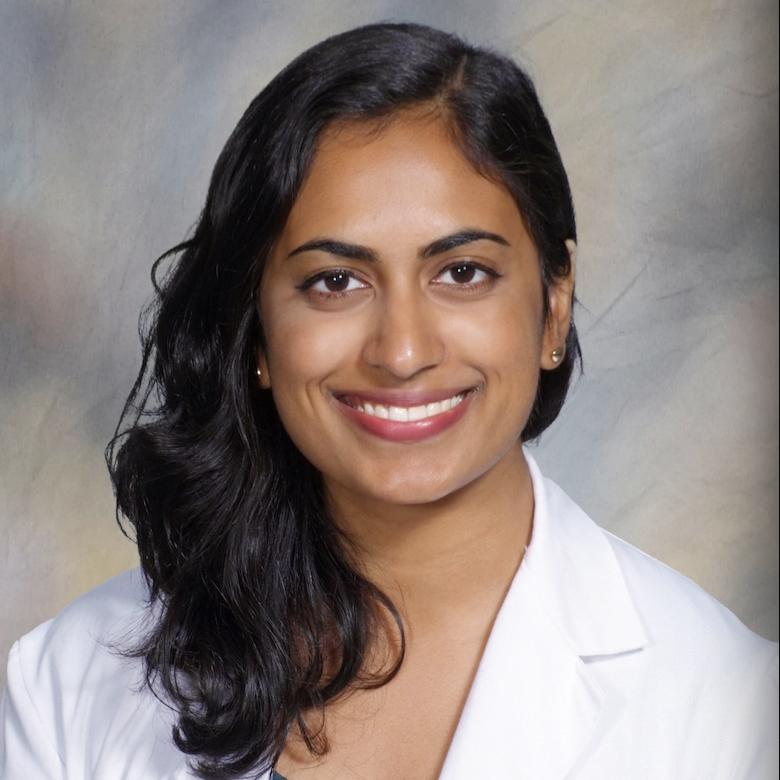 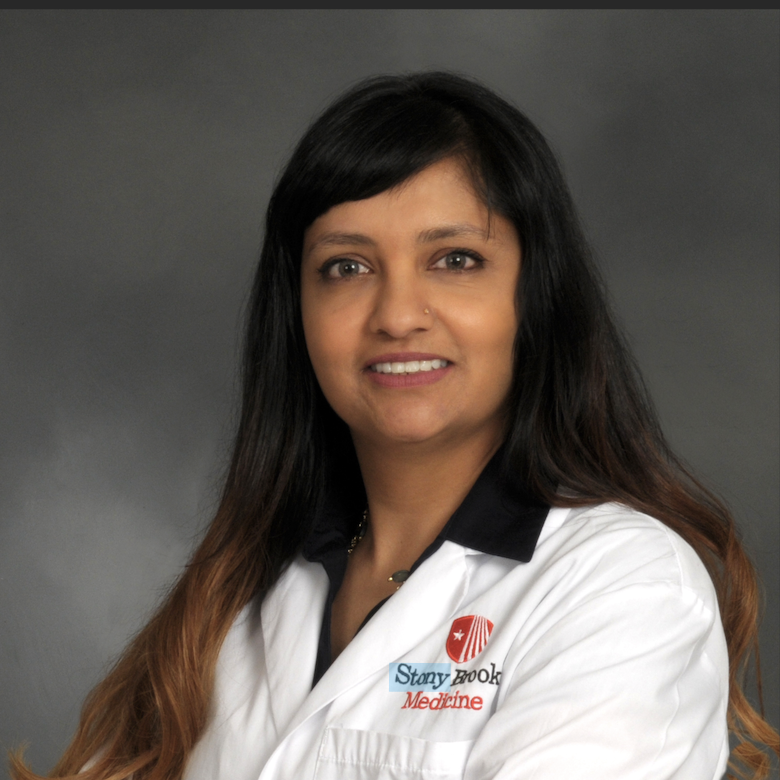
|
|
INTRODUCTION
Experiential learning is insufficient alone for high stakes, low frequency critical care events, including cardiac arrest in the medical intensive care unit. Simulation-based education facilitates recreation of otherwise low frequency events, allows for a safe environment to optimize clinical performance, and improves quality of care. In-situ simulation enables problem solving in the same clinical environment trainees work in daily. Prior literature has demonstrated the efficacy of in-situ simulation programs in pediatric cardiopulmonary arrest with the program improving clinical outcomes(1). Participation in mock cardiopulmonary events has been shown to increase resident confidence and comfort(2).Our novel “mirroring” paradigm may improve the in-situ simulation experience by stimulating the internal motivations of the critical care trainee to ensure adequate care for their specific patient. Mirroring incorporates details into a simulated decompensating scenario a real patient in their current environment is at risk for. An in-situ mirror simulation program, focused on managing cardiac arrest, was implemented at our institution. Technical and non-technical skills were assessed at or beyond American Heart Association standards. A debriefing session followed each simulation and confidence in managing cardiac arrest was assessed with pre and post simulation surveys.
ABSTRACT PRESENTATION
An in-situ mirror simulation program was conducted in the medical intensive care unit in July 2022 at our institution. Medicine resident participants were scored for performance using a modified American Heart Association checklist on technical and nontechnical skills. Technical skills included, but were not limited to, checking for a pulse, performing chest compressions at an appropriate rate and depth, and searching for reversible causes. Nontechnical skills included ability to gain team “buy-in,” provide real-time feedback to team members, and use clear and directed speech. Program evaluation and confidence surveys were administered after the simulation. Senior residents, defined as third year medical residents, (n=7) performed at 81% for all skills overall. 100% of all participants (n=20) found the program educational and 90% of participants rated the activity as beneficial or extremely beneficial (Figure 1). There was a significant mean increase in confidence in technical (p=0.005) and nontechnical (p<0.001) skills among senior residents after simulation, but a simultaneous significant decrease in technical confidence (p=0.037) among medicine interns for the same skills (Figure 2).
DISCUSSION
This novel in-situ mirror simulation program was well-received, feasible to implement, and effectively promoted in-time training. The in-situ nature of the training did not interfere with resident duties and the spontaneity of the simulation led residents to work under the same pressures of a real code. Cost of implementation was minimal, as equipment was often reused for each activity. This combined with the portable nature of this programs supports its use in institutions that lack formal simulation programs or hope to augment their simulation programs. Feedback collected after the simulation identified the educational nature of the simulation and debriefing session as especially useful. The debriefing session was instrumental in identifying learner deficits and promoting reflective learning. This activity increased confidence among senior residents who acted as team leaders at each in-situ simulation. Significant decreases in technical confidence among interns suggests a need for longitudinal implementation of this simulation program. As confidence and competency increase longitudinally in trainees, we predict that this in turn, will translate to improved clinical outcomes.
CONCLUSION
In-situ mirror simulation is a novel and effective learning strategy that engages adult learners and promotes key learning strategies for critical care education. Its ease of implementation and high learner satisfaction supports its future implementation as a novel paradigm for critical care training.
We describe a successful innovative longitudinal POCUS training course for pulmonologists crafted using 4C/ID model, and primarily designed and taught by senior PCCM fellows. We hope that this course can serve as an example for formal longitudinal POCUS courses for pulmonologists, for incorporating instructional design into POCUS training, and for utilizing trainees notjust as instructors but as educators of POCUS.
REFERENCES
- Andreatta, P., Saxton, E., Thompson, M., & Annich, G. (2011). Simulation-based mock codes significantly correlate with improved pediatric patient cardiopulmonary arrest survival rates*. Pediatric Critical Care Medicine, 12(1), 33–38. https://doi.org/10.1097/pcc.0b013e3181e89270
- Couloures, K. G., & Allen, C. (2017). Use of simulation to improve cardiopulmonary resuscitation performance and code team communication for pediatric residents. MedEdPORTAL. https://doi.org/10.15766/mep_2374-8265.10555
|
| |
| Addressing Microaggression During Training |
|
Amira Mohamed, MD
Maneesha Bangar, MD
Montefiore Medical Center
|
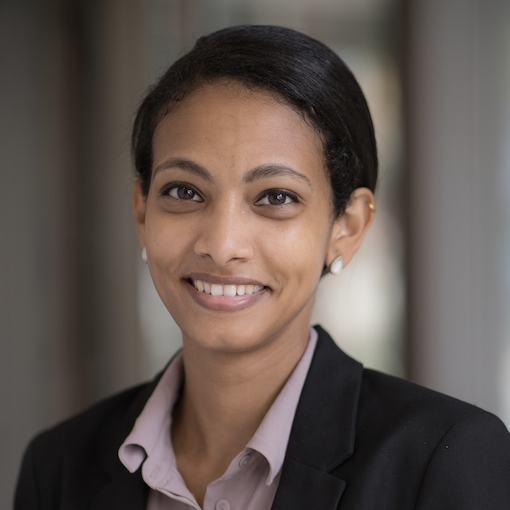 
|
|
INTRODUCTION
Microaggression in medicine, which is usually a result of implicit bias, is a contributor to lack of diversity in the workforce, which in turn contributes to lower quality of care. Education on implicit bias is frequently taught in medical school and in residency; however, how to respond to microaggression when it comes from coworkers or supervisors is not addressed as frequently. Verbal, emotional and even environmental microaggression exists in hospitals and can lead to burnout of both victims and witnesses translating to a more hostile work environment. Our goal was to provide our fellows from Critical Care Medicine and Pulmonary and Critical Care Medicine Fellowship Programs with tools and support to combat microaggression that they will encounter during and after their training. We found minimal guidance in medical literature as to how to approach this issue but there were multiple articles from the business and finance world which we used as a guide.
ABSTRACT PRESENTATION
To assess the degree of the issue in our institution, we started by surveying the CCM and the PCCM fellows with a focus on the incidence of microaggression, whether they felt supported and ready to stand up to microaggression, and what the barriers may be. We included the Acting as Ally behavioral scale as an assessment prior to an educational session. We received 24 responses from a total of 35 fellows and the majority of the fellows (50%) felt that they were victims of microaggression in the six months prior to the survey while 75% witnessed an act of microaggression during the same period. Only 55% of the fellows felt as though they can respond to microaggression if they witness it with the most quoted barrier being hierarchy and fear of retaliation. We then implemented a simulation session with the fellows, supervising attendings and an actor where two scenarios were acted out with a paid actor as an aggressor. The fellows were given the following tools to act as a guide to respond in a non-confrontational manner. 1) Pause the conversation; eg, Can we go back to what you just said? 2) Point out the microaggression using the same words or phrases the aggressor used and how they sounded to you; eg, You said that most women cannot work in Critical Care and that made me feel concerned. 3) Ask in a curious tone rather that an accusatory tone to give the aggressor a chance to rectify their error; eg, What did you mean when you said most people in this community are drug addicts? 4) Value the victim and highlight what they did right; eg, She did the right thing by coming here and seeking medical help when she felt unwell. 5) Refocus the conversation once you made your point even if the aggressor did not admit their mistake; eg, Let’s go back to rounds for now but I will be happy to discuss this with you again later if you like. The fellows would use these tools to confront the actor in different scenarios where he was a fellow and an attending while getting constant feedback from the rest of the attendees including fellows and attendings. During these sessions, we created an environment for the fellows to openly discuss their own struggles and situations they were in that they felt they should have spoken up. The fellows were eager to contribute to the discussion and added their own quotes to the tools that were provided to them.
DISCUSSION
Although it frequently occurs as proven by our survey, most of our fellows had no prior training on microaggression and felt uncomfortable standing up to it. We believe this contributed to an unhealthy and hostile environment that we are determined to combat. We wanted to provide the fellows with tools that they can use in such situations without escalating to a confrontation and also to show that the division is supportive of these efforts. We provided suggested tools and created a platform for fellows to openly discuss situations they have witnessed while empowering them to speak up and become allies.
CONCLUSION
More education on microaggression and how to combat it is needed in Critical Care and in medicine in general.
REFERENCES
- Rotenstein LS, Reede JY, Jena AB. Addressing Workforce Diversity - A Quality-Improvement Framework. N Engl J Med. 2021 Mar 25;384(12):1083-1086. doi: 10.1056/NEJMp2032224. Epub 2021 Mar 20. PMID: 33764706.
- Saha S, Fernandez A, Perez-Stable E. Reducing language barriers and racial/ethnic disparities in health care: an investment in our future. J Gen Intern Med. 2007 Nov;22 Suppl 2(Suppl 2):371-2. doi: 10.1007/s11606-007-0372-4. PMID: 17896164; PMCID: PMC2040485.
|
| |
| POCUS for Pulmonologists: Novel Fellow-Taught Longitudinal Point-of-Care Ultrasound Course Created Through Four-Component Instructional Design |
|
Deepak Pradhan, MD, MHPE candidate
Jacqueline Paulis, MD, MHPE candidate
David T. Stern, MD, PhD
New York University Grossman School of Medicine
Elise L. Huppert, MD, MSCI
Columbia University Irving Medical Center
Amanda Jurewicz, MD, MBA
Hospital of the University of Pennsylvania
|
  
 
|
|
INTRODUCTION
National surveys(1) and local needs assessment demonstrate lack of point-of-care ultrasound (POCUS) pulmonary faculty competence, negatively impacting trainee education. Faculty development options are limited. National primer courses require time and cost, often with subsequent skill degradation. Local longitudinal training is necessary for sustained skill adoption but can strain expert resources. One novel approach is to utilize POCUS-competent trainees as POCUS teachers. POCUS is a complex skill combining cognitive knowledge, psychomotor skills, and attitudes that requires a systematic approach to teaching and learning. Merriënboer’s four-component instructional design (4C/ID) is a learner-centered constructivist model for teaching complex skills that focuses on authentic whole tasks, deliberate practice, skill transference to the real-world and new situations (scaffolding), fosters intrinsic motivation, and offers a practical approach centered on learning tasks, supportive information, procedural information, and part-task practice(2). We propose addressing lack of pulmonologist POCUS competence with a longitudinal fellow-taught training course created through 4C/ID model.
ABSTRACT PRESENTATION
Literature review(3) and stakeholder needs analysis generated course objectives: performance of thoracic ultrasound (evaluation of pleural effusions, lung consolidation, pneumothorax, diaphragmatic function, pulmonary edema, acute dyspnea, and thoracic procedures), focused transthoracic echocardiography, and venous diagnostic ultrasound. Course delivered by seven monthly 2-3 hour sessions from 11/2022 through 05/2023: Session 1 Vascular US; Session 2 Lung/Pleural US simulation setting; Session 3 Lung/Pleural US inpatient setting; Session 4 Focused TTE simulation setting; Session 5 Focused TTE inpatient setting; Session 6 US for Acute Respiratory Failure; Session 7 Diaphragmatic US. Pulmonary attendings were voluntarily recruited via divisional email. CME-accredited, IRB-approved. Sessions 2-5 were entirely designed and taught by eight third-year POCUS-competent pulmonary/critical care medicine (PCCM) fellows who received an interactive lecture on 4C/ID model, after which they then crafted their educational session, including specific authentic whole learning tasks with task sequencing, curated learner supportive information, procedural just-in-time information, and part-task practice for recurrent constituent skills (Figure 1 Sample Task Session). Fellows received in-person feedback post-session from a faculty supervisor using a formalized feedback tool. Learners completed pre- and post-course: 25-question multiple-choice test (MCT), Likert confidence surveys, and three behaviorally-anchored OSCEs. Data analyzed with Wilcoxon matched-pairs signed-rank test. Ten pulmonologists completed the course (30% male, median 15 years out-of-training). Pre-course median MCT score 50% [IQR 37-64], post-course median 74% [IQR 50-80], p=0.02. Pre- vs. post-course learner confidence (Figure 2) increased for lung/pleural US (median 2.5 to 4/5, p=0.02), DVT exams (2 to 3.5/5, p<0.01), BLUE protocol (1 to 4/5, p<0.01), diaphragmatic US (2 to 3/5, p=0.02), focused TTE (2 to 3/5, p<0.01), saving/archiving images (1 to 3/5, p=0.04). Pre- vs. post-course learner performance on all three OSCEs increased—rule out pleural effusion (median item accuracy 57% to 100%, p<0.01), qualification of left ventricular function and anatomy identification (4% to 96%), and BLUE protocol for acute respiratory failure (0% to 100%). Three learners have created portfolios to satisfy institutional POCUS credentialing for thoracic ultrasound (25 exams), with others working toward that goal.
DISCUSSION
This unique course supports successful learning through authentic learner-relevant tasks, sets learning objectives that steadily increase in complexity toward mastery learning, and provides formative and summative assessments to drive learning. The results demonstrate improvement in attending pulmonologist POCUS knowledge (MCTs), image acquisition skills (OSCEs), and POCUS attitudes (confidence surveys), and suggest potential for sustained skill adoption (portfolio creation).
CONCLUSION
Fellowship education has not previously included formal curriculum to teach skills necessary for providing virtual critical care. Capitalizing on our growing telemedicine program, we designed and implemented a tele-ICU/eICU rotation paired with a faculty-fellow guided discussion curriculum on important relevant topics. Given the rapid increase in the use of tele-critical care internationally, PCCM and CCM training programs have an opportunity to develop curriculum to ensure that fellows are graduating with skills to provide remote critical care services.
REFERENCES
- Brady, A.K., Spitzer, C.R., Kelm, D., Brosnahan, S.B., Latifi, M., & Burkart, K.M. (2021). Pulmonary Critical Care Fellows' Use of and Self-reported Barriers to Learning Bedside Ultrasound During Training: Results of a National Survey. Chest, 160(1), 231–237.
- Van Merriënboer, J.J.G., & Kirschner, P.A. (2018). Ten steps to complex learning: A systematic approach to four-component instructional design (3rd Rev. Ed.). New York: Routledge.
- Chichra, A., Makaryus, M., Chaudhri, P., & Narasimhan, M. (2016). Ultrasound for the Pulmonary Consultant. Clin Med Insights Circ Respir Pulm Med, 10, 1-9.
|
| |
| Better Together: Pulmonary Fellow Group Evaluations of Faculty Are Stronger Than Individual Evaluations Alone |
|
Zachary A Reese, MD
Jessica T. Lee, MD, MSHP
Caitlin B. Clancy, MD, MSHP
Hospital of the University of Pennsylvania
|
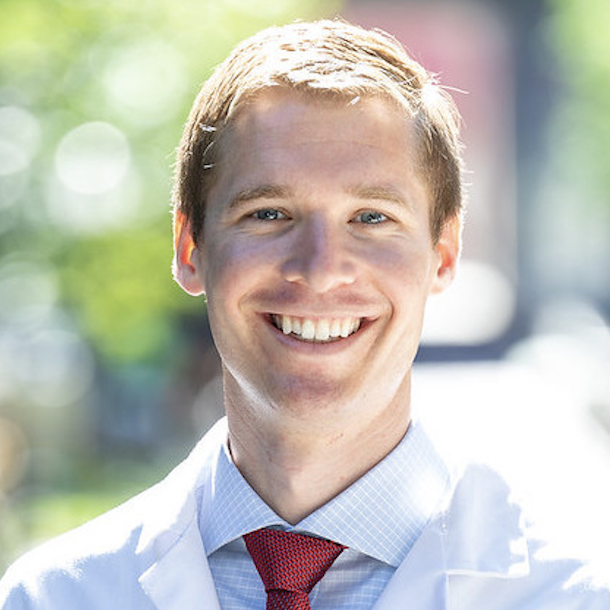 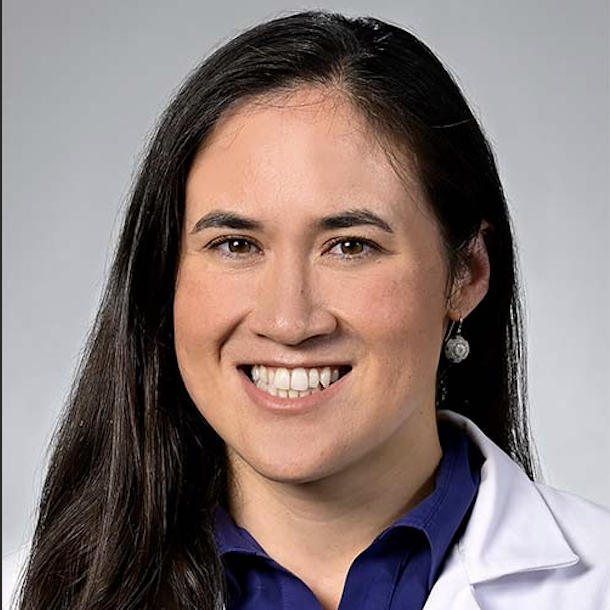 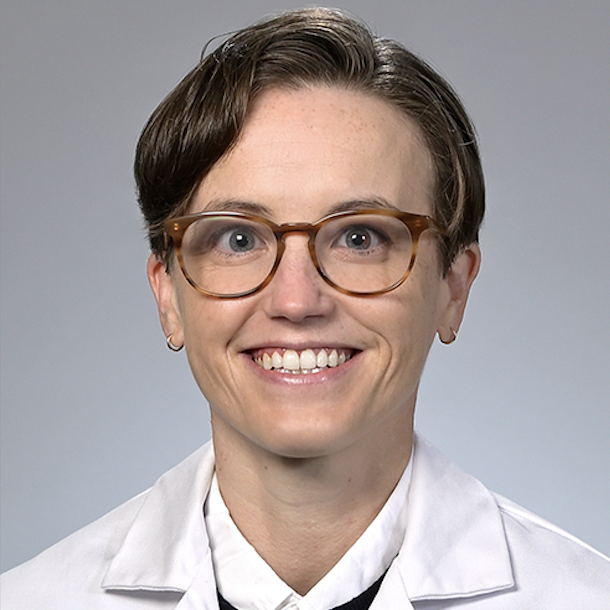
|
|
INTRODUCTION
High-quality evaluation and feedback are essential for faculty development and promotion as well as program improvement. However, limited data indicate that trainee evaluations of faculty are unhelpful(1,2,3). One potential factor may be concerns about anonymity and retribution, especially in programs with a small number of trainees, such as subspecialty fellowships. In the Pulmonary and Critical Care Medicine (PCCM) fellowship at the Hospital of the University of Pennsylvania, our trainees consistently felt on the Accreditation Council for Graduate Medical Education (ACGME) Resident/Fellow Survey that evaluations were not confidential. Because of this, we developed and implemented a group-based faculty evaluation and feedback model to address anonymity concerns and improve the overall quality of evaluation and feedback.
ABSTRACT PRESENTATION
In March 2019, we instituted fellow group evaluation sessions that were held every four months, focusing on providing high-quality, behaviorally-oriented, actionable feedback to faculty. Sessions were scheduled during protected didactic time, and included fellows from all training years, moderated by upper-year fellows. Faculty members were selected based on recent rotation schedules, with priority given to new or struggling faculty. Three to four faculty members were discussed in each one-hour session using a standard format to elicit strengths and areas for growth. Moderators prompted fellows to provide specific behaviors and elicited different experiences or opinions to avoid groupthink. Session notes were compiled and sent to the program director, who distributed the feedback to individual faculty.
In the approximately three and one-half years since implementation of the group feedback sessions, 37 unique faculty members have been evaluated in 11 sessions. After the first six sessions, a 9-question electronic survey was distributed to the fellows to assess the group evaluation model, including fellow perceptions of accuracy, quality, and anonymity of feedback, with comparisons to individual written evaluations. In the survey distributed, Nineteen out of 28 fellows responded to the survey (68%), with the majority (95%) reporting participation in at least one group evaluation session. Most fellows (94%) rated group feedback as ‘much better’ than written feedback. When asked to compare methods, feedback generated by group evaluation was rated as more confidential (78%), more specific (100%), more accurate (94%), more efficient (59%), more actionable (100%), and less biased (56%) (Figure 1). Using paired t-tests to compare mean Likert scale ratings, group feedback was rated significantly higher along multiple domains, including confidentiality, efficiency, quality, and inclusion of specific, behavioral-based feedback (Table 1). All fellows agreed that group evaluation should continue. Based on the aggregate responses, we identified common themes and created a list of best practices for teaching faculty in the ICU, with a mirroring list of best practices for fellows in the ICU (Table 2).
DISCUSSION
Overall, fellows preferred group evaluation sessions to written evaluations, indicating that feedback generated from group feedback was more confidential, more accurate, and more actionable compared to written evaluations. There was more equipoise over whether group feedback was less biased and/or more efficient when compared directly. However, the overall quality of feedback and was rated significantly higher for group evaluations. A limitation of this innovation is that it was performed at a single center in a single fellowship program. Future plans include assessment of faculty perceptions of the group feedback model, as well as qualitative comparison of feedback generated from each method.
CONCLUSION
Fellow group evaluation of faculty for feedback is more favorably perceived by PCCM fellows compared to written evaluations. This model can be adapted by any fellowship program as long as there is a peer facilitator and protected time to hold the sessions.
REFERENCES
- Reddy ST, Zegarek MH, Fromme HB, Ryan MS, Schumann S-A, Harris IB. Barriers and Facilitators to Effective Feedback: A Qualitative Analysis of Data From Multispecialty Resident Focus Groups. J Grad Med Educ. 2015;7(2):214-219. doi:10.4300/JGME-D-14-00461.1
- Pelsang RE, Smith WL. Comparison of anonymous student ballots with student debriefing for faculty evaluations. Medical Education. 2000;34(6):465-467. doi:https://doi.org/10.1046/j.1365-2923.2000.00565
- Williams BC, Pillsbury MS, Stern DT, Grum CM. Comparison of resident and medical student evaluation of faculty teaching. Eval Health Prof. 2001;24(1):53-60. doi:10.1177/01632780122034786
|
| |
| Implementing a Structured Multidisciplinary Critical Care Curriculum for Critical Care Fellows |
|
Drew D. Robinson, MD
Sheetal Gandotra, MD
University of Alabama at Birmingham
|
 
|
|
INTRODUCTION
Critical care medicine includes many subspecialties that must function as a team in order to optimize patient care.(1) In the last several years, the importance of interdisciplinary education has been recognized to improve collaboration and teamwork among disciplines.(1) However, education in various critical care fellowships is typically siloed with limited curricular collaboration. Guidelines recommend that education in critical care should encompass all specialties that provide care in the intensive care unit.(2) Our goal was to develop a critical care curriculum incorporating various critical care specialties including medicine, anesthesia, surgery, and neurology.
ABSTRACT PRESENTATION
We developed a collaborative interdisciplinary educational curriculum for fellows from anesthesia critical care, neuro critical care, pulmonary critical care, and trauma surgical critical care, called the Multidisciplinary Critical Care Curriculum (MDCCC). The curriculum was designed by the program directors of all the critical care fellowship programs at UAB. Over the course of several meetings, using the ACGME Critical Care Common Program Requirements and the previously well-developed critical care education components of the Pulmonary Critical Care fellowship curriculum, the program directors generated a list of common topics that should be covered during MDCCC. The curriculum begins with didactics and workshops during “Introduction to Critical Care Fellowship” from July to August, including orientation lectures for the first two weeks of the year. Subsequently, the curriculum runs during a two hour weekly time slot from noon to 2PM, which was agreed upon by the program directors as protected education time. The remainder of the one-year curriculum is comprised of fellow-led sessions including Critical Care Case Conference, Radiology Conference, Morbidity and Mortality Conference, Journal Club, and faculty presentations. We also include a monthly small group workshop, during which the fellows rotate through the sessions on the following topics: Cardiology Cases, Tracheotomy Cases, Patient Safety Cases, Ventilator Wave Forms, Point of Care Ultrasound Image Review (Table 1). The program directors agreed to aim for at least two faculty from each discipline being present for each conference. We are also assessing fellow and faculty perception on the importance of multidisciplinary critical care education, topics that are valuable inclusions in this curriculum, and the prior critical care curricula for each of the involved fellowships using pre- and post-curriculum implementation REDCap surveys. Our multidisciplinary critical care curriculum was initiated in July 2022 and will last until the end of the academic year in June 2023.
DISCUSSION
One unique aspect of critical care is that there are several paths that can be taken to become an intensivist. Another is the importance placed on multidisciplinary involvement. Care provided by each member of the team including nurses, respiratory therapists, techs, physical therapists, occupational therapists, and pharmacists is essential to the delivery of critical care medicine. Furthermore, interprofessional education in healthcare has become increasingly important and essential in delivering patient-centered care.(3) Interprofessional education has also been shown to improve learner knowledge, skills, and attitudes.(3) However, training is classically siloed and even work environments tend to be partitioned into neurological, medical, or surgical intensive care units. This likely results in reaching a ceiling in education that can be raised by increasing collaboration. Future additions to this curriculum include adding an interprofessional component.
CONCLUSION
We developed a multidisciplinary critical care curriculum in the form of weekly two hour sessions, comprised of fellow and faculty led conferences as well as small group sessions, attended by faculty and fellows in all the critical care disciplines (anesthesia, pulmonary, neuro, and surgical critical care) at UAB to increase collaboration and improve the quality and breadth of critical care education. This curriculum can be shared and used in other institutions that have multiple critical care training programs.
REFERENCES
- Tisherman SA, Spevetz A, Blosser SA, Brown D, Chang C, Efron PA, O'Connor M, Sevransky JE, Wessman BT. A Case for Change in Adult Critical Care Training for Physicians in the United States: A White Paper Developed by the Critical Care as a Specialty Task Force of the Society of Critical Care Medicine. Crit Care Med. 2018 Oct;46(10):1577-1584. doi: 10.1097/CCM.0000000000003266. PMID: 30015669.
- Dorman T, Angood PB, Angus DC, Clemmer TP, Cohen NH, Durbin CG Jr, Falk JL, Helfaer MA, Haupt MT, Horst HM, Ivy ME, Ognibene FP, Sladen RN, Grenvik AN, Napolitano LM; American College of Critical Care Medicine. Guidelines for critical care medicine training and continuing medical education. Crit Care Med. 2004 Jan;32(1):263-72. doi: 10.1097/01.CCM.0000104916.33769.9A. PMID: 14707590.
- Guraya SY, Barr H. The effectiveness of interprofessional education in healthcare: A systematic review and meta-analysis. Kaohsiung J Med Sci. 2018 Mar;34(3):160-165. doi: 10.1016/j.kjms.2017.12.009. Epub 2018 Jan 9. PMID: 29475463.
|
| |
| Impact of Simulation-based Mastery Learning on Massive Hemoptysis Management for Pulmonary Fellows and Advanced Practice Providers |
|
Timothy J. Rowe, MD
Kaitlyn M. Vitale, MD
Clara J. Schroedl, MD
Elizabeth Malsin, MD
Northwestern University Feinberg School of Medicine
Christine Argento, MD
Johns Hopkins University
|
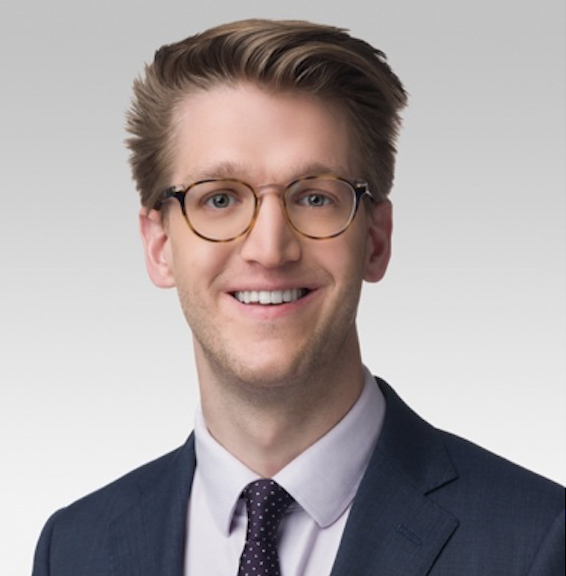 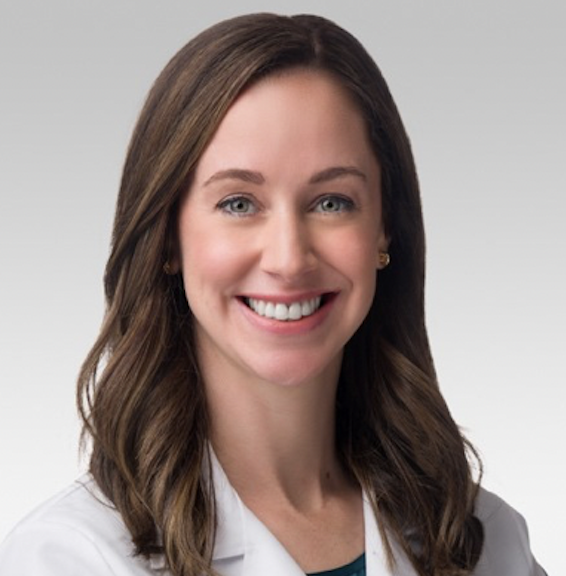 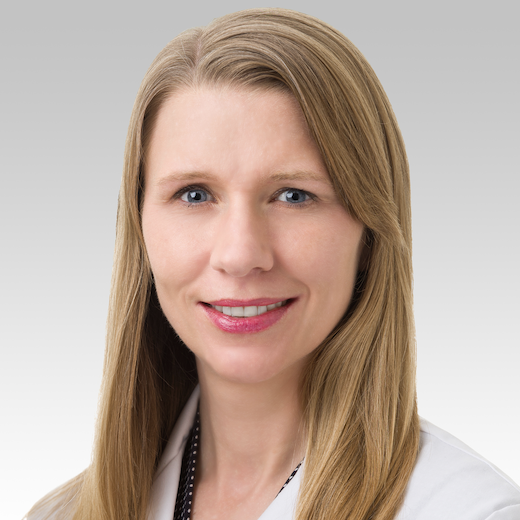
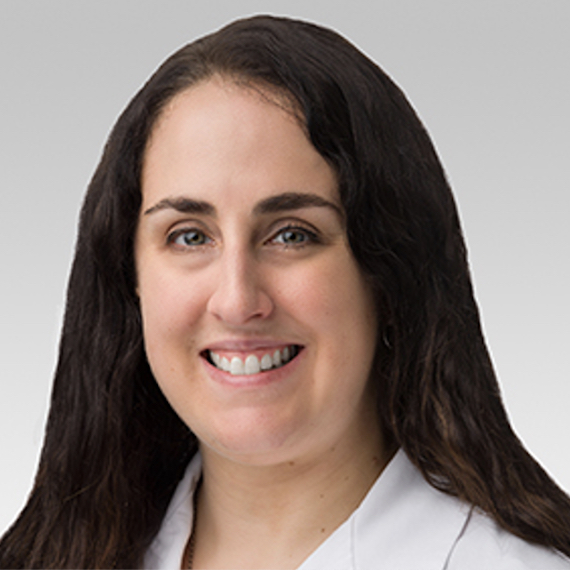 
|
|
INTRODUCTION
Massive hemoptysis is a challenging clinical scenario which continues to have high mortality despite advances in medical imaging, fiber-optic technology and interventional radiology.(1) Management of airway bleeding is a high-risk, low-volume procedure which lacks dedicated training in nearly half of Pulmonary and Critical Care Medicine (PCCM) fellowship programs.(2) A scalable educational intervention to address such a gap may play an important role in patient safety and outcomes. Existing simplified frameworks to manage massive hemoptysis(3) have potential for cognitive offloading in this high stress scenario, but real situational experience is both crucial and difficult to guarantee. Simulation-based education (SBE) may provide an answer to the concern of inconsistent trainee exposure. Prior studies have established the effectiveness of SBE in difficult psychomotor tasks such as emergent airway management(4) and complex situations such as advanced cardiac life support(5), although application to massive hemoptysis has not been described. In contrast to traditional SBE, simulation-based mastery learning (SBML) reduces or eliminates variability in trainee skills after an educational intervention and assures each learner achieves a minimum passing standard (MPS).(5-9) Our aim was to modify an existing high-fidelity simulation for massive hemoptysis to create a rigorous, competency-based standard and assess the impact of this intervention.
ABSTRACT PRESENTATION
A curriculum simulating massive hemoptysis management (Figure 1) has been conducted semiannually since 2020 at an academic PCCM fellowship program with 15 clinical fellows. This simulation, which takes place in the hospital bronchoscopy suite, utilizes a high-fidelity manikin, real bronchoscopy equipment and involves the full interprofessional bronchoscopy team. In 2021 a survey was conducted among nine learners, of whom eight were PCCM fellows and one thoracic advanced practice provider. All respondents agreed that simulation experience would improve team performance in bronchoscopy emergencies, and that the manikin realistically simulated massive hemoptysis. Effective use of debriefing, realistic team dynamics and the opportunity to use a bronchial blocker were identified as valuable facets of the experience. We have revised this curriculum in 2022, incorporating SBML pedagogy and creating an asynchronous “flipped classroom” session to prime learners and maximize educational yield. We created a 27-item checklist-based skills assessment using a modified Delphi method (Table 1). This will be subjected to a Mastery Angoff standard setting procedure in which expert judges will review individual checklist items and estimate the percentage of trainees who would perform each item correctly at posttest, creating a MPS. The curriculum will consist of rapid cycle deliberate practice(10) and individualized feedback. Along with a pre- and post-intervention skills assessment, we will survey learners’ self-confidence managing massive hemoptysis before and after the curriculum. This will be piloted in January-February 2023 on the PCCM fellowship class of 2025.
DISCUSSION
We created a novel simulation for a high-risk, low-volume procedure that lacks established training standards among PCCM fellows. Pilot results suggest that our experience is realistic to technical components of procedure and an effective exercise in inter-professional team dynamics. We are restructuring our simulation into a rigorous SBML curriculum and will assess whether the curriculum improves confidence and skills in the simulated environment. Future work will focus on evaluating the impact of an interprofessional simulation experience on effecting a shared mental model(11) and evaluating the impact of the intervention on patient-level outcomes.
CONCLUSION
Massive hemoptysis is a challenging clinical scenario with high mortality which is inconsistently encountered by trainees. A SBML curriculum is one educational strategy that ensures all learners can manage this emergency safely and competently.
REFERENCES
- Davidson K, Shojaee S. Managing Massive Hemoptysis. Chest. 2020;157(1):77-88. doi:10.1016/j.chest.2019.07.012
- Richards JB, Claar D, McCurdy MT, Shah NG, McSparron JI, Seam N. Impact of Risk and Volume on Procedural Training of Pulmonary and Critical Care Fellows. Sch. 2021;2(2):212-223. doi:10.34197/ats-scholar.2020-0110OC
- New ML, Huie TJ. ABCDE Approach for Massive Hemoptysis: A Novel Cognitive Aid. Sch. 2022;3(2):197-203. doi:10.34197/ats-scholar.2022-0008PS
- Rosenthal ME, Adachi M, Ribaudo V, Mueck JT, Schneider RF, Mayo PH. Achieving Housestaff Competence in Emergency Airway Management Using Scenario Based Simulation Training. Chest. 2006;129(6):1453-1458. doi:10.1378/chest.129.6.1453
- Wayne DB, Butter J, Siddall VJ, et al. Mastery learning of advanced cardiac life support skills by internal medicine residents using simulation technology and deliberate practice. J Gen Intern Med. 2006;21(3):251-256. doi:10.1111/j.1525-1497.2006.00341.x
- Barsuk JH, McGaghie WC, Cohen ER, O’Leary KJ, Wayne DB. Simulation-based mastery learning reduces complications during central venous catheter insertion in a medical intensive care unit. Crit Care Med. 2009;37(10):2697-2701.
- Barsuk JH, Ahya SN, Cohen ER, McGaghie WC, Wayne DB. Mastery learning of temporary hemodialysis catheter insertion by nephrology fellows using simulation technology and deliberate practice. Am J Kidney Dis Off J Natl Kidney Found. 2009;54(1):70-76. doi:10.1053/j.ajkd.2008.12.041
- Barsuk JH, McGaghie WC, Cohen ER, Balachandran JS, Wayne DB. Use of simulation-based mastery learning to improve the quality of central venous catheter placement in a medical intensive care unit. J Hosp Med. 2009;4(7):397-403. doi:10.1002/jhm.468
- Wayne DB, Barsuk JH, O’Leary KJ, Fudala MJ, McGaghie WC. Mastery learning of thoracentesis skills by internal medicine residents using simulation technology and deliberate practice. J Hosp Med. 2008;3(1):48-54. doi:10.1002/jhm.268
- Johnsen BH, Westli HK, Espevik R, Wisborg T, Brattebø G. High-performing trauma teams: frequency of behavioral markers of a shared mental model displayed by team leaders and quality of medical performance. Scand J Trauma Resusc Emerg Med. 2017;25(1):109. doi:10.1186/s13049-017-0452-3
- Hunt EA, Duval-Arnould JM, Nelson-McMillan KL, et al. Pediatric resident resuscitation skills improve after “rapid cycle deliberate practice” training. Resuscitation. 2014;85(7):945-951. doi:10.1016/j.resuscitation.2014.02.025
|
| |
APCCMPD AWARD FOR INNOVATIVE FELLOWSHIP PROGRAM ADMINISTRATION
|
The APCCMPD Award for Innovative Fellowship Program Administration recognizes outstanding contributions to fellowship program administration through the development of novel best practices in pulmonary, critical care, or pulmonary/ critical care medicine fellowship programs. Program Administrators, Program Coordinators, Program Managers and equivalent roles are encouraged to submit an abstract describing the implementation of a successful effort or program applied to the administrative operations of the fellowship program.
|
Congratulations to the 2023 awardee:
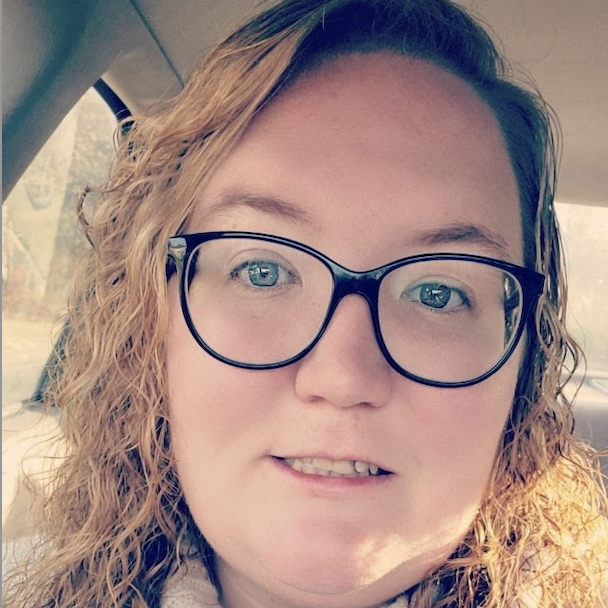
Jessica Ratcliffe, MBA, C-TAGME
Virginia Tech Carilion School of Medicine
Utilizing a New Customizable Scoring Tool to Recruit and Select Pulmonary/Critical Care Fellows
|
| |
2023 AWARDEE
Utilizing a New Customizable Scoring Tool to Recruit and Select Pulmonary/Critical Care Fellows |
|
Jessica Ratcliffe, MBA, C-TAGME
Susanti R. Ie, MD, MPH
Virginia Tech Carilion School of Medicine
|
 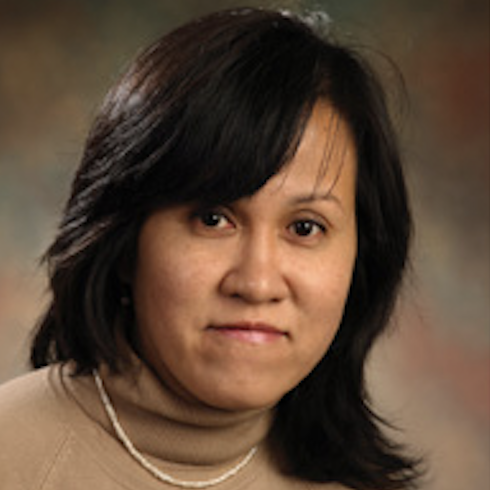
|
|
INTRODUCTION
A customizable scoring system was developed to create a composite score which ranked applicants to our fellowship program to create an improved and efficient screening process for pulmonary and critical care fellowship recruitment.
ABSTRACT PRESENTATION
We created a customizable scoring system for our pulmonary and critical care section which assigned each applicant a composite score by utilizing various weighted components found in the Electronic Residency Application Service (ERAS) and the interview process (Table 1). Each applicant was then ranked according to their composite score. This customizable scoring rubric allows us to place more weight on certain characteristics that our pulmonary/critical care attendings felt were most important. We were able to demonstrate that the rubric was more efficient and effective in the recruitment of our pulmonary/critical care fellows.
DISCUSSION
Two hundred and sixty Pulmonary/Critical Care Fellowship applications were reviewed from 2013 to 2018. In 2018, we used our new scoring rubric to create a rank list and rescore previous applicants. The traditional and new lists were compared to the final rank list submitted to the National Residency Matching Program (NRMP) for 2018 (Graph 1). We wanted to ascertain which scoring method correlated best with the final rank list submitted to the NRMP. We obtained feedback from eight faculty members who had reviewed applicants with both scoring tools.
CONCLUSION
Ranking applicants to fellowship programs remains both challenging and time consuming. Additionally, different programs vary in the indicators they choose to rely on and how those indicators are weighted. In this study, we developed a customizable scoring tool to rank applicants to our fellowship program by creating a composite score for each applicant. This tool weighted and utilized components in ERAS and the interview process in order to create a final rank list that remained consistent with the desired applicants for our residency/fellowship program.
Our results confirmed that this new customizable scoring tool has allowed us to create a final rank list that is helpful in narrowing the applicant list to our faculty’s desired applicants. In regard to the new scoring tool, a faculty member said, “There is a slight improvement, still hard to judge the applicants based on a single interview.” In other words, although designing scoring tools is vital and improves the application process, further research should focus on expanding ways of judging applicants apart from interviews or on improving the interview process.
We hope to share this customizable scoring rubric with other programs to create a more efficient and effective way to manage the residency/fellowship application process.
REFERENCES
- Richards JB, Spiegel MC, Wilcox SR. Characteristics of Pulmonary Critical Care Medicine and Pulmonary Medicine Applicants and Fellowships. ATS Scholar. 2020;1(1):67-77. doi:10.34197/atsscholar.2019-0009oc
- Alterman DM, Jones TM, Heidel RE, Daley BJ, Goldman MH. The Predictive Value of General Surgery Application Data for Future Resident Performance. Journal of Surgical Education. 2011;68(6):513-518. doi:10.1016/j.jsurg.2011.07.007
- Chen F, Arora H, Martinelli SM, Teeter E, Mayer D, Zvara DA, et al. The predictive value of prerecruitment achievement on resident performance in anesthesiology. Journal of Clinical Anesthesia. 2017;39:139-144. doi:10.1016/j.jclinane.2017.03.052
- Chole RA, Ogden MA. Predictors of Future Success in Otolaryngology Residency Applicants. Archives of Otolaryngology–Head & Neck Surgery. 2012;138(8):707. doi:10.1001/archoto.2012.1374
- Creech CJ, Aplin-Kalisz C. Developing a selection method for graduate nursing students. Journal of the American Academy of Nurse Practitioners. 2011;23(8):404-409. doi:10.1111/j.1745-7599.2011.00626.x
- Hillebrand K, Leinum CJ, Desai S, Pettit NN, Fuller PD. Residency application screening tools: A survey of academic medical centers. American Journal of Health-System Pharmacy. 2015;72(11_Supplement_1). doi:10.2146/ajhp150093
- Lee AG, Golnik KC, Oetting TA, Beaver HA, Boldt HC, Olson R, et al. Re-engineering the Resident Applicant Selection Process in Ophthalmology: A Literature Review and Recommendations for Improvement. Survey of Ophthalmology. 2008;53(2):164-176. doi:10.1016/j.survophthal.2007.12.007
- Neely D, Feinglass J, Wallace WH. Developing a Predictive Model to Assess Applicants to an Internal Medicine Residency. Journal of Graduate Medical Education. 2010;2(1):129-132. doi:10.4300/jgme-d-09-00044.1
- Patterson F, Knight A, Dowell J, Nicholson S, Cousans F, Cleland J. How effective are selection methods in medical education? A systematic review. Medical Education. 2015;50(1):36-60. doi:10.1111/medu.12817
- Sharp C, Plank A, Dove J, Woll N, Hunsinger M, Morgan A, et al. The Predictive Value of Application Variables on the Global Rating of Applicants to a General Surgery Residency Program. Journal of Surgical Education. 2015;72(1):148-155. doi:10.1016/j.jsurg.2014.06.003
- Bosslet GT, Carlos WG, Tybor DJ, McCallister, J, Huebert C, Henderson A, et al. Multicenter Validation of a Customizable Scoring Tool for Selection of Trainees for a Residency or Fellowship Program. The EAST-IST Study. Annals of the American Thoracic Society. 2017;14(4):517-523. doi:10.1513/annalsats.201611-938oc
- Sklar DP, Tandberg D. The value of self-estimated scholastic standing in residency selection. The Journal of Emergency Medicine. 1995;13(5):683-685. doi:10.1016/0736-4679(95)00082-l
- Skalski JH, Dulohery MM, Kelm DJ, Ramar K. Impact of a Preinterview Dinner on Candidate Perception of a Fellowship Training Program. Journal of Graduate Medical Education. 2016;8(5):763-766. doi:10.4300/jgme-d-16-00162.1
- Kasales C, Peterson C, Gagnon E. Interview Techniques Utilized in Radiology Resident Selection—A Survey of the APDR. Academic Radiology. 2019;26(7):989-998. doi:10.1016/j.acra.2018.11.002
- Cocciante AG, Nguyen MN, Marane CF, Panayiotou AE, Karahalios A, Beer JA, et al. Simulation Testing for Selection of Critical Care Training: A Pilot Feasibility Study. Annals of the American Thoracic Society. November 2016. doi:10.1513/annalsats.201601-012oc
|
Achievement Awards
OUTSTANDING EDUCATOR AWARD
|
|
APCCMPD members work diligently to foster excellence in education through the training and mentoring of the next generation of educators in pulmonary, critical care, and/or pulmonary/critical care medicine. The annual aspirational Outstanding Educator Award recognizes clinicians who are exemplary clinician-educators. They have cultivated achievements for which peer medical educators can aspire. The recipient is chosen by their peers for demonstrating excellence in the development of future physicians by making significant, innovative, and/or cumulatively outstanding contributions to education in pulmonary and/or critical care medicine.
The APCCMPD honors the contributions of all 2023 nominees:
Sahar Ahmad, MD
Associate Professor of Medicine
Stony Brook University Renaissance School of Medicine
Saadia Faiz, MD
Professor
University of Texas Health Science Center at Houston
|
Congratulations to the 2023 awardee:

Carolyn D'Ambrosio, MD, MS
Associate Professor of Medicine
Yale University School of Medicine
Carolyn D'Ambrosio, MD, MS is the Vice Chief for Fellowship Training in the Section of Pulmonary and Critical Care Medicine at Yale University School of Medicine. Prior to coming back to Yale, she was the Program Director for the Harvard-Brigham and Women’s Hospital Fellowship in Pulmonary and Critical Care Medicine and Associate Professor of Medicine at Harvard Medical School. She has been awarded Best Teacher from both medical students and residents during her years on Faculty and received a Distinguished Teaching Award from the Pulmonary Division at Tufts Medical Center prior to her departure from there. Most recently she was awarded the Pillar Award for Educational Program Leadership, the top award for Program Directors throughout the Mass General Brigham institutions. She has consistently been named one of Boston’s Best Doctors for the past several years. Nationally, she has received numerous Distinguished CHEST Educator awards from the American College of Chest Physicians and is a member of the Board of Trustees for the CHEST Foundation. In addition to teaching and clinical work, Dr. D’Ambrosio has conducted research on Sleep and Menopause, Sleep and Breathing in Infants, and participated as the sleep medicine expert in two systemic reviews on home sleep apnea testing and fixed versus auto-titrating CPAP. She recently co-authored a book "Comfort the Kid!" on infant sleep and parent bonding.
|
MID-CAREER EDUCATOR AWARD
|
|
The Mid-Career Educator Award honors mid-career individuals who are actively engaged in enhancing the practice and profession of pulmonary, critical care, and/or pulmonary/critical care medicine through education. The medical educator selected for this award is actively making significant and innovative contributions to education in pulmonary and/or critical care medicine.
The APCCMPD honors the contributions of all 2023 nominees:
Anas Hadeh, MD
Clinical Assiistant Professor of Medicine
Cleveland Clinic Florida
Tristan J. Huie, MD
Associate Professor of Medicine
University of Colorado
Stephanie Maximous, MD, MS
Assistant Professor of Medicine
University of Pittsburgh
Jakob McSparron, MD
Associate Professor
University of Michigan
|
Congratulations to the 2023 awardee:
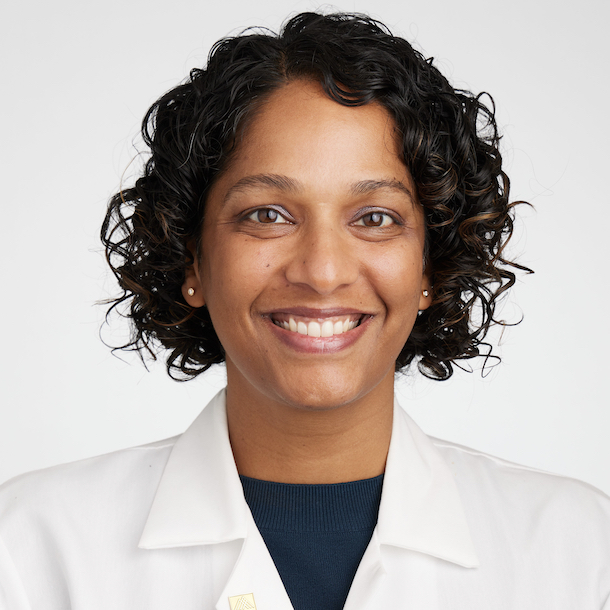
Mirna Mohanraj, MD
Associate Professor of Medicine
Icahn School of Medicine at Mount Sinai
Mirna Mohanraj, MD is an Associate Professor of Medicine and Medical Education at the Icahn School of Medicine at Mount Sinai and the Associate Program Director for the Mount Sinai Morningside-West Pulmonary and Critical Care Medicine Fellowship. Dr. Mohanraj graduated from the University of Connecticut School of Medicine and completed her Internal Medicine Residency and Chief Residency at the University of Chicago Hospital and the John H. Stroger, Jr. Hospital of Cook County. She completed her Pulmonary and Critical Care Fellowship at Mount Sinai Hospital.
Dr. Mohanraj's interests focus on curriculum development, physician trainee well-being, humanism in medicine, program remediation, and bioethics improvement and education. Amongst other awards for teaching excellence and leadership, her longstanding Humanism in Medicine Series received a 2017 American Thoracic Society Innovation in Fellowship Education Award. Her study aimed at humanizing the ICU experience was awarded a 2019 ACGME Back to the Bedside (B2B) grant and the first-ever 2022 ACGME B2B Multi-site dissemination grant. Dr. Mohanraj is founder and director of the Mount Sinai Health System Teaching Scholars Curriculum for Subspecialty Fellows, a longitudinal tech-driven curriculum that prepares fellows for careers in medical education. She has developed novel programming targeting issues of diversity, equity, inclusion, and community engagement including: bias mitigation workshops, holistic recruitment strategies, and the Walk Together, Talk Together series building physician community engagement through local walking groups. Dr. Mohanraj serves as an Ombudsman, Co-Chair of the Mount Sinai Morningside-West Hospitals Bioethics Committee, and is an active member of the APCCMPD Education Committee.
|
EMERGING EDUCATOR AWARD
|
|
The Emerging Educator Award honors up-and-coming medical educators for their work in delivering and promoting medical education in pulmonary, critical care, and/or pulmonary/critical care medicine through various means at the local and regional levels.
The APCCMPD honors the contributions of all 2023 nominees:
Shari Brosnahan, MD
Assistant Professor of Medicine
New York University Grossman School of Medicine
Andrea Jonas, MD
Clinical Assistant Professor of Medicine
Stanford University
Viren Kaul, MD
Clinical Assistant Professor of Respiratory Therapy Education
SUNY Upstate Medical University
|
Congratulations to the 2023 awardees:

Avraham (Avi) Cooper, MD
Clinical Assistant Professor of Internal Medicine
The Ohio State University
Avraham (Avi) Cooper, MD is a pulmonary/critical care physician and Assistant Professor of Medicine at The Ohio State University in Columbus, OH. He was born in Atlanta, GA and moved to Boston, MA before studying English literature at Yeshiva University in New York City. He returned to Boston for medical school at Harvard and Internal Medicine residency at Beth Israel Deaconess Medical Center, where he developed a deep passion for medical education and completed a Clinician Educator Track. After completing a Pulmonary and Critical Care Medicine fellowship at Ohio State, he joined the faculty there. He serves as the fellowship Program Director and has several teaching roles at the College of Medicine. He serves on the APCCMPD Education Committee and Ambulatory Care Curriculum Work Group, and currently is the Webinar Lead for the ATS Section on Medical Education. He has won multiple awards for teaching and humanism at Harvard and Ohio State and co-hosts The Curious Clinicians podcast.
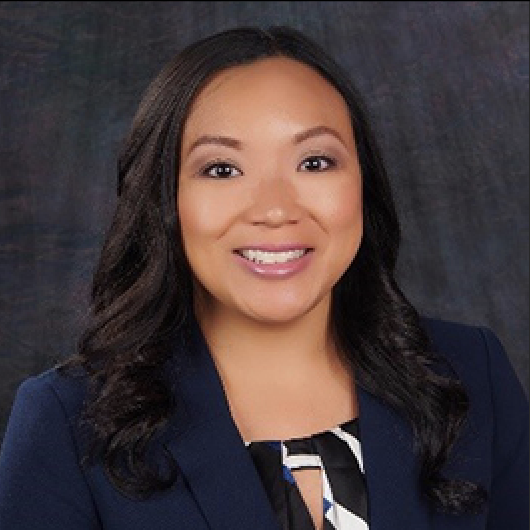
Van Holden, MD
Assistant Professor of Medicine
University of Maryland
Van K. Holden, MD, FCCP is an Associate Professor of Medicine at the University of Maryland School of Medicine. She is the Program Director for the Pulmonary and Critical Care Medicine fellowship program and Associate Program Director for the Interventional Pulmonology fellowship program. Her passion for teaching and leadership was realized in residency, and she served as Chief Resident and later, as Chief Fellow.
Dr. Holden was ecstatic to be named Program Director in 2019. In her role, she implemented a PCCM Interest Group for residents, holistic review process of fellowship candidates, specialty interest fellowship tracks, mentorship program, and ombudsperson program. Her clinical expertise is in interventional pulmonology, and she directs multiple courses on a local, regional, and national level. She started a local monthly Innovation in Bronchoscopy Education Series, organizes a highly rated yearly Airway and Pleural Disease Course for regional critical care fellows, and will co-chair the 2023 AABIP IP Fellow Boot Camp.
Additionally, Dr. Holden is actively involved in several national organizations. As a CHEST member, she served on the Trainee Work Group, gives talks at their annual meetings, and was awarded Distinguished CHEST Educator in 2022. Since joining the APCCMPD, she is a member of the Education Committee, Membership Survey Committee, and Associate Editor for Voices in #MedEd Blog. She has more than 30 publications and more than 60 abstracts. She was invited to the ATS Scholar Editorial Board due to her expertise and is an active participant on several AABIP committees.
|
Funding Awards
|
The APCCMPD, CHEST and ATS Education Research Award is a monetary grant awarded to Fellows-in-training, junior faculty within 5-years of program completion, Associate Program Directors and/or Program Directors, to fund research projects that further the field of pulmonary and critical care graduate medical education research.
The APCCMPD honors the contributions of all 2023 nominees:
Mark H. Adelman, MD
New York University Grossman School of Medicine
SIM-plifying Palliative Extubations v2.0: Expansion of a Multidisciplinary OSCE Program to Assess Pulmonary-Critical Care Fellows’ Skills in Ventilator Titration
Kavitha Bagavathy, MD
University of Southern California
Into the (W)ILD: A Novel Curriculum for Evaluation and Management of Patients with Interstitial Lung Disease
Daniel K. Manson, MD
Columbia University Medical Center
A Serious Illness Communication and Palliative Care Curriculum for Critical Care: Building and Evaluating an Interprofessional, Longitudinal, Hybrid, Transportable Curriculum
Tirsa M. Ferrer Marrero, MD
University of Illinois at Chicago
Establishing an Expanded Airway Curriculum in an Adult Pulmonary and Critical Care Fellowship Program in Chicago
Blair C. Stone, MD
University of Pittsburgh
The PSG Platform: An Innovative Technology-based Curriculum for Teaching Pulmonary Fellows Polysomnography and Home Sleep Apnea Test Interpretation
|
Congratulations to the 2023 awardee:

Clara J. Schroedl, MD, MS
Northwestern University Feinberg School of Medicine
Impact of Simulation-Based Mastery Learning on Massive Hemoptysis Management for Pulmonary and Critical Care Fellows and Advanced Practice Providers
Clara J. Schroedl, MD, MS is an Associate Professor of Medicine and Medical Education in the Division of Pulmonary and Critical Care at Northwestern University Feinberg School of Medicine. She completed her medical degree, residency, chief residency, Master of Science in Clinical Investigation, and fellowship at Northwestern. Dr. Schroedl is the Program Director for the Northwestern Pulmonary Diseases and Critical Care Medicine Fellowship Program, the Assistant Designated Institutional Officer (Institutional Accreditation), and Medical Director for Continuing Medical Education at Northwestern University. She also serves on the Accreditation Review Committee for the Accreditation Council of Continuing Medical Education and is the past chair of the Continuing Professional Development Section of the Group on Educational Affairs (AAMC). She was the recipient of the Alvin H. Baum Clinical Simulation Grant for her project using simulation-based mastery learning to teach ventilator management skills.
PROJECT SUMMARY
Massive hemoptysis is a high-risk, low-volume procedure which lacks dedicated training in nearly half of Pulmonary and Critical Care Medicine (PCCM) fellowship programs. High fidelity simulation is one approach to increase exposure to management strategies for massive hemoptysis. Simulation-Based Mastery Learning (SBML) reduces variability in trainee skills after an educational intervention and allows for rigorous assessment of the impact on skill acquisition. To address the gap in hemoptysis education, we created an SBML curriculum for management of massive hemoptysis from segmental airway bleeding and will assess confidence and learner skill acquisition after our intervention. We propose this as a strategy to decrease variability in trainee confidence and competence in managing this important clinical emergency. Further, our proposal includes a longitudinal assessment of learners to assess skill retention, and expansion of the curriculum to the larger multidisciplinary and interprofessional team members who participate in hemoptysis management.
|
CHEST FOUNDATION AND APCCMPD AWARD RESEARCH GRANT FOR MEDICAL EDUCATION
|
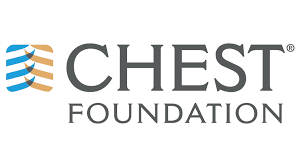 |
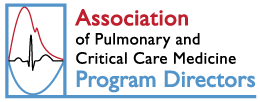 |
|
|
|
The CHEST Foundation and APCCMPD Award Research Grant for Medical Education is a monetary grant awarded jointly by the CHEST Foundation and the APCCMPD. Together, the CHEST Foundation and the APCCMPD are collaborating to advance graduate medical education and provide opportunities for scholarly activity that support medical educators in the field of adult pulmonary and/or critical care graduate medical education.
|
Congratulations to the 2022 awardee:
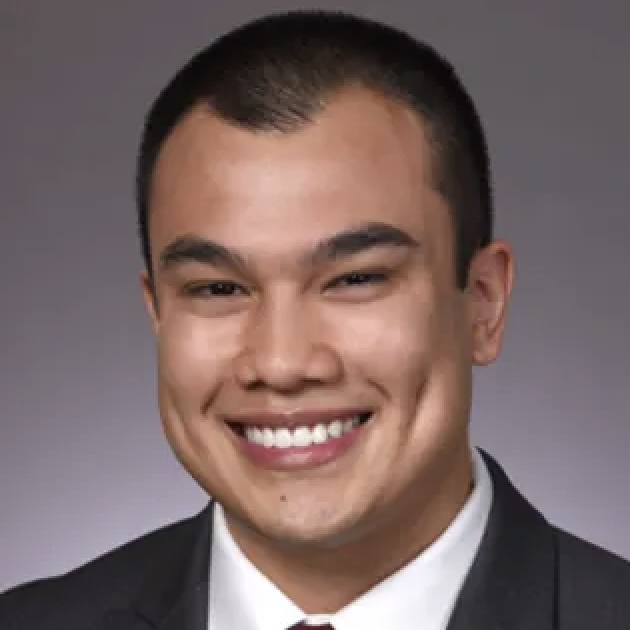
Christopher Thanh Leba, MD, MPH
University of California, San Francisco
Evaluating a 3D Printed Tracheobronchial Model for Bronchoscopy Training and its Use in Understanding Embodied Cognition in Procedural Education
Christopher Thanh Leba, MD, MPH is a Pulmonary and Critical Care fellow at University of California, San Francisco. He is a Vietnamese American originally born in Houston, Texas. He attended Rice University, University of Texas Southwestern Medical Center, University of Texas School of Public Health, and now University of California, Berkeley where he is completing a Master of Arts in Education. He completed the Osler Medical Residency at Johns Hopkins Hospital. He is interested in procedural education and how intelligent resource design can facilitate trainee learning and change ways of thinking.
PROJECT SUMMARY
We designed a novel 3D printed tracheobronchial model with color coded airways and orientation markers to facilitate bronchoscopic anatomy learning. We subsequently randomized medical students to bronchoscopy training on this 3D printed model or a commercial manikin with both didactic and practical airway identification. Interviews and video data were collected for analysis to better understand the learning strategies and processes between the models. This study aims to compare how bronchoscopic anatomy learning differs between the models and the learning impact of designed features using 3D printing as a medium.
|
|